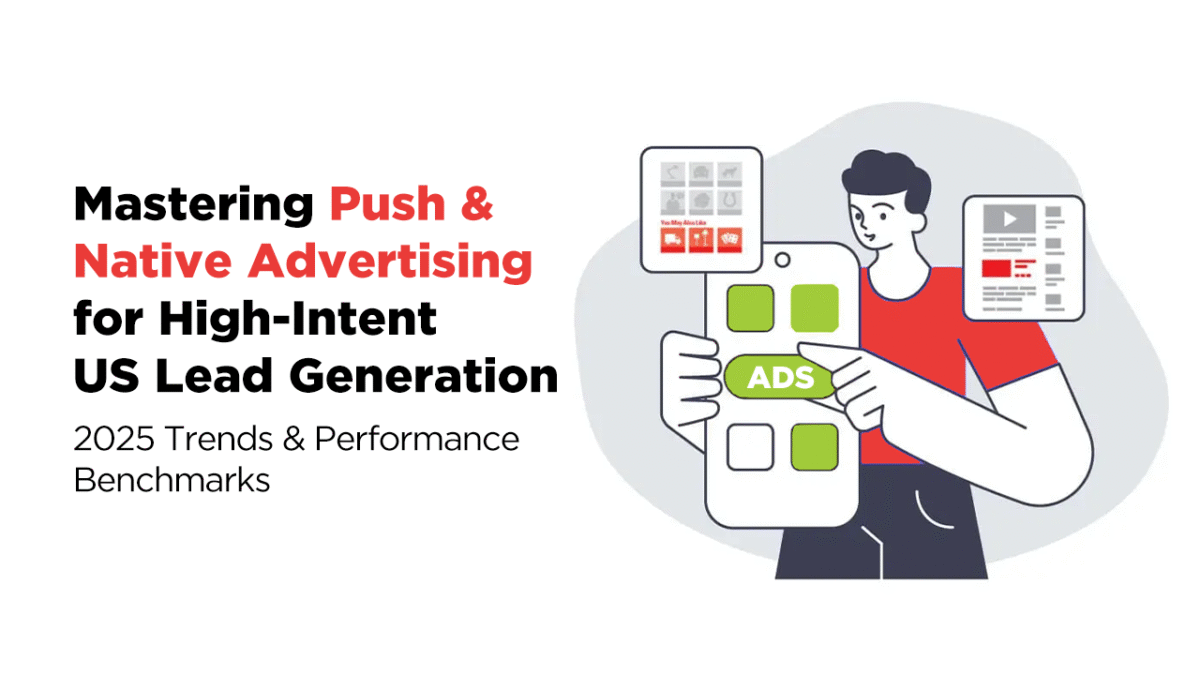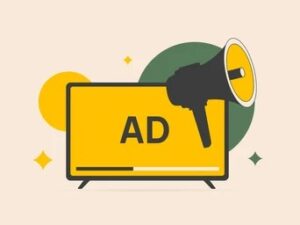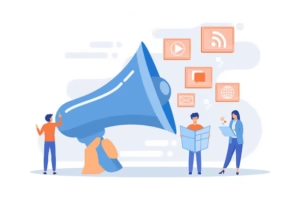
Have you ever had the impression that you’re receiving a lot of clicks but very few actual leads? As if you’re spending a lot of money on advertising campaigns and seeing them light up dashboards, but the conversions are simply not happening? You’re not alone, and if you work in the fiercely competitive lead generation market in the United States, you are all too familiar with this battle. The good news? Push alerts and native advertising, two frequently underappreciated ad forms, present a new chance to change things in 2025.
Push and native ads are subtly making a huge comeback, while paid search and social ads still have to contend with growing CPCs, platform limits, and tracking restrictions. For a fraction of the price, astute performance marketers are already using these channels to capture high-intent leads. When properly implemented, these ad forms are not just reasonably priced but also strong, scalable, and unexpectedly engaging.
This blog is your guide to handling push and native advertising in 2025, regardless of whether you’re targeting homeowners in Florida, insurance searchers in Texas, or seniors searching for Medicare supplements throughout the country. We’re delving into performance standards, trends, and optimization techniques.

Let’s quickly go over the fundamentals before moving on to strategies.
Push ads are alerts that show up on a user’s desktop or mobile device even when they aren’t actively surfing. They are straightforward, up-to-date, and ideal for attracting immediate attention with offers that are time-sensitive, such as free quotes or consultations.
Conversely, native advertisements are integrated into news or publisher websites’ content feeds. They resemble standard articles but direct readers to funnels, such as pre-sell pages or quizzes, which makes them perfect for offers that require education or trust-building.
Push is scalable and quick. Native is interesting and nuanced. The secret to converting clicks into quality leads in 2025 is to become proficient in both.
The dual-format strategy, which uses native for depth and push for volume, is one of the most intriguing concepts for 2025. While native ads cultivate warmer prospects and increase LTV, push ads provide instant traffic and early lead volume.
Push ads, for instance, can be used by a financial services company to direct consumers to a short-form lead capture page where they could check their credit score. They can also publish native articles informing readers on how enhancing their credit can lead to loan approvals. Email or perhaps another push notification campaign is used to segment, retarget, and upsell those leads over time.
When combined, push and native ads can help you reach more quality leads and scale more quickly. They become a potent tactic for any lead gen marketer when paired with the appropriate tools, such as tracking, segmentation, and lead scoring.
Honestly, it depends on your campaign goals, budget, and funnel complexity.
| Criteria | Push Ads | Native Ads |
| Best for | Fast traffic, quick opt-ins | Long-form storytelling, trust-building |
| Average CPL | Lower ($5–$12) | Higher ($8–$15) |
| Creative fatigue | Fast | Slower with variations |
| Funnel type | Short-form, lead-gen pages | Advertorials, quizzes, multi-step funnels |
| Lead quality | Moderate | Higher when qualified |
Pro tip: Use push ads for volume and native ads for quality, especially if you’re running a dual traffic strategy and need scale without sacrificing LTV.

Now that you’ve got the formats down, here’s how to fine-tune for intent:
Native headlines like “This 59-Year-Old Unlocked $25K in Benefits—Here’s How” or push titles like “You May Qualify for Free Dental Insurance” are purpose clues rather than clickbait. Align your creatives with the user’s motivation for converting.
Make use of lead forms that include screening questions about homeownership, insurance status, age, and income. In addition to enhancing quality, this helps provide your retargeting pool with accurate data.
Use systems that provide micro-conversion events (such as scroll depth or quiz completion) or CPA-based bidding to ensure that you are paying for intent rather than just clicks.
Using native funnels to collect emails? Users can be added to a push list. Not a lead but a click? Within 24 hours, retarget them with a reminder push.
Push and native aren’t just surviving in 2025; they’re changing. Performance marketers are using these forms with far greater intelligence, speed, and intentionality this year. The days of “prayer and prayer” have passed. These days, platform behaviour, context, and personalization are crucial.
The move towards hyper-personalized communications is one significant trend in push advertising. Ultra-specific hooks, like “Texas Homeowners Could Save on Solar with This Simple Form,” are replacing broad, generic content like “Check Your Loan Eligibility.” Better click-through rates and, more crucially, stronger leads are being produced via behavioural segmentation, device-specific copy, and geotargeting. Due to users’ increased relaxation and propensity to interact during downtime, delivery windows in the evening and on weekends are also showing promising results.
The largest trend in native advertising is the use of long-form content channels. Showing a link to a landing page and a teaser headline is no longer sufficient. These days, the most successful advertisements incorporate multi-step experiences that captivate people before they ever ask for information, such as quizzes, personal narratives, or articles based on data. To maintain high engagement without creative fatigue, we’re really witnessing an increase in AI-assisted headline testing and dynamic content rotation on native platforms.
The increasing focus on targeting that complies with privacy regulations is another significant trend in both formats. Marketers are turning to contextual targeting and first-party data, such as retargeting based on quiz completions or landing page scroll depth, as third-party cookies become less common.
Knowing what KPIs to target is crucial when running push and native efforts, and fortunately, this year’s figures appear to be encouraging.
It has been demonstrated that push notifications have very high engagement rates. Retail verticals are experiencing an average CTR of about 2.97%, with iOS devices delivering 2.48% and Android smartphones delivering 3.01%, according to Business of Apps.. If you’re reaching that 2% CTR, this works out to roughly $10 for 20,000 impressions at a normal CPM bid of $0.01. These numbers and actual campaign data show that, when combined with optimised funnels, U.S. lead-generation campaigns typically generate CPLs of $5–$12 and lead-to-qualified rates of 15%–25%, according to Business of Apps, Pushhubnet, and more.
Standard display advertising continues to lose ground to native formats. According to Zebracat, native advertisements perform better at 1.13% CTR than display ads, which average 0.71%. With strong engagement from people who are actively reading material, other case studies, such as MVF’s, indicate that CPCs on native platforms can be up to 7× less expensive than on social media. This puts CPLs in the $8–$15 range in a typical high-intent vertical, with lead-to-qualified ratios typically ranging from 18–30%.
Eliminating shortcuts is crucial if you want push and native to be effective for lead generation in 2025. These are tactical instruments, not panaceas. The top marketers are converting clicks into commissions in the following ways:
First, align your creatives with the level of your funnel. Be bold and direct while addressing cold audiences on the push. headlines that read, “You Could Be Eligible for Free Dental Care” or “Low-Credit? “Check Your Loan Options in 60 Seconds” piques interest and promotes prompt interaction. Use the storytelling method for natives. The headline “This 59-Year-Old Saved $300 a Month on Health Insurance—Here’s How” seems like a personal breakthrough. Telling a story that flows organically into your funnel is more than just selling a service.
Second, rather than being a barrier, utilize pre-qualification as a tool for conversion. This stage rejects low-quality leads and mentally commits visitors to the journey, regardless of whether it’s a straightforward 3-question quiz or a form that requests information like age, ZIP code, or insurance status. When qualified users believe they have already begun, they are much more likely to finish the next step.
Third, keep a close eye on everything and optimize thoroughly. To determine what is effective and double down, use device-level data, event-based attribution, and pixel tracking. Significant changes in CPL or conversion rate might result from minor adjustments to the creativity, delivery schedule, or CTA copy.
Lastly, experiment creatively while optimising ruthlessly. Avoid becoming overly connected to your first successful headline. Rotate, retest, and continue to evolve in response to the results. What was successful in January might not be so in July. The most successful campaigns are responsive, flexible, and performance-driven.
The world of lead generation is changing quickly, and those that can adjust will succeed in 2025. Push and native ads are now essential components of every successful plan and are no longer merely substitutes for traditional traffic. When combined, they provide the ideal balance of clicks and conversions, speed and depth, and scalable volume with high-quality leads.
However, it takes more than just traffic to run these campaigns properly. Strong offers, well-designed funnels, precise tracking, and a thorough comprehension of the factors influencing high-intent behaviours are all necessary. vCommission can help with that.
By giving partners access to premium CPL offers, pre-tested creatives, and a tracking infrastructure that eliminates uncertainty, vCommission is assisting them in mastering the push and native ecology. Our affiliate managers collaborate with you to convert unqualified traffic into qualified, revenue-generating leads, whether you’re scaling an already-existing campaign or trying something new.
Now is the moment to take action if you’re prepared to quit chasing pointless clicks and begin turning genuine intent into income. You’re not just keeping up with the trends in lead generation in 2025 when you have vCommission as your growth partner; you’re setting the standard. We can assist you in making every click matter, whether you’re a brand trying to scale quality leads or access performance-ready funnels. Together, let’s develop.